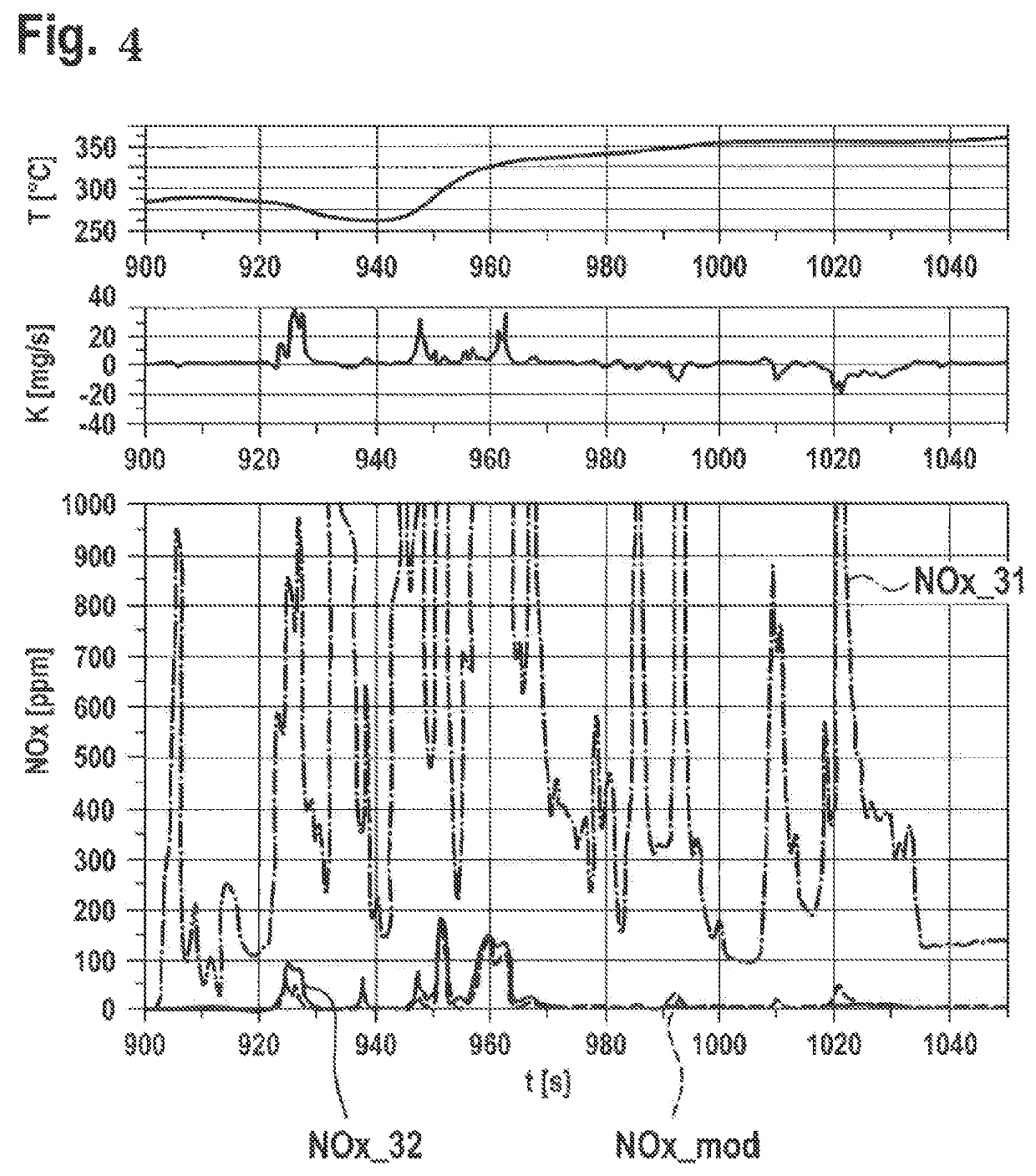Method for controlling an SCR catalytic converter
a technology of catalytic converter and catalytic converter, which is applied in the direction of machines/engines, engine components, mechanical equipment, etc., can solve the problems of ammonia slip, reduced ammonia storage capacity, and high level of ammonia in the first scr catalytic converter, so as to achieve the maximum efficiency of nitrogen oxide conversion and improve overall efficiency of the scr catalytic converter. , the effect of robust determination of the level
- Summary
- Abstract
- Description
- Claims
- Application Information
AI Technical Summary
Benefits of technology
Problems solved by technology
Method used
Image
Examples
Embodiment Construction
[0023]A combustion engine 10 comprises in the exhaust system 11 thereof an SCR catalytic converter system 20 that is represented in FIG. 1. Said system comprises a reducing agent metering unit 40, with which a urea-water solution can be injected into the exhaust system 11. Ammonia is released from this at the high temperatures of the exhaust gas. A first SCR catalytic converter 21 and a second SCR catalytic converter 22 are disposed downstream of the reducing agent metering unit 40. The catalytic converter material of the first SCR catalytic converter is disposed on a particle filter (SCR on filter; SCRF). A first NOx sensor 31 is disposed in the exhaust system 11 upstream of the sensor reducing agent metering unit 40. A second NOx sensor 32 is disposed between the two SCR catalytic converters 21, 22. A third NOx sensor is disposed downstream of the second SCR catalytic converter 22. All the NOx-sensors 31, 32, 33 pass the signals thereof to an electronic control unit 50.
[0024]In th...
PUM
 Login to View More
Login to View More Abstract
Description
Claims
Application Information
 Login to View More
Login to View More - R&D
- Intellectual Property
- Life Sciences
- Materials
- Tech Scout
- Unparalleled Data Quality
- Higher Quality Content
- 60% Fewer Hallucinations
Browse by: Latest US Patents, China's latest patents, Technical Efficacy Thesaurus, Application Domain, Technology Topic, Popular Technical Reports.
© 2025 PatSnap. All rights reserved.Legal|Privacy policy|Modern Slavery Act Transparency Statement|Sitemap|About US| Contact US: help@patsnap.com



